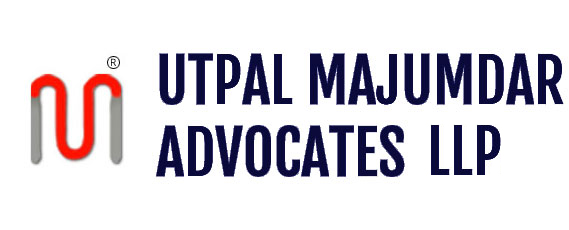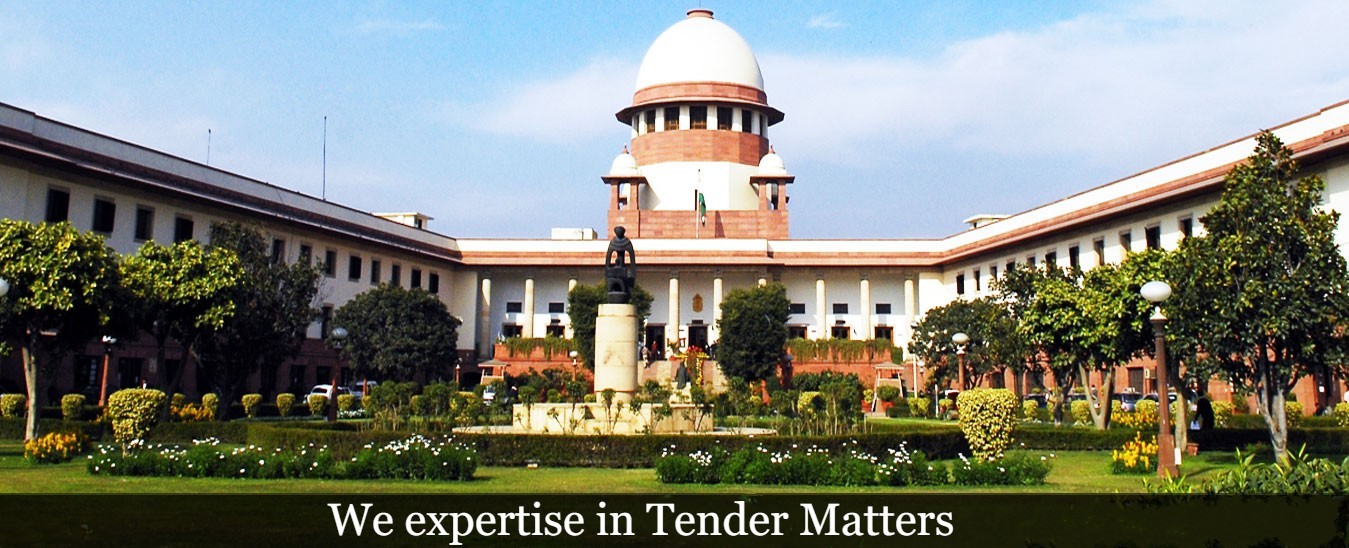|
Q) Is there any
minimum number of directors that a company has to
appoint?
A) Yes. Every Public
company has to have at least three directors and every
private company has to have atleast two directors.
Q) What are the
different types of companies?
A) There can be six
types of companies in India based on their features of
incorporation. These can be distinguished on the basis
of liability and shareholding: Liability (Limited by
Shares, Limited by Guarantee and Unlimited) Shareholding
(Private and Public) In addition to the above it is also
possible to incorporate joint stock companies in India.
These companies are similar to partnerships but are not
commonly used.
Q) Who are members
of a company?
A) The subscribers of
the memorandum of a company are deemed to have become
members of a company, and on its registration, shall be
entered as members in its register of members. Every
other person who agrees in writing a become member of a
company and whose name is entered in its register of
members, is a member of the company. Every person
holding equity share capital of a company and whose name
is entered as beneficial owner in the records of the
depository shall be a member of the concerned company.
Q) Who are members
of a company?
A) The subscribers of
the memorandum of a company are deemed to have become
members of a company, and on its registration, shall be
entered as members in its register of members. Every
other person who agrees in writing a become member of a
company and whose name is entered in its register of
members, is a member of the company. Every person
holding equity share capital of a company and whose name
is entered as beneficial owner in the records of the
depository shall be a member of the concerned company.
Q) What kind of
company has share capital?
A)
A company limited by shares has share capital. Share
capital is a fund representing the nominal value of
shares.
2) Foreign Direct
Investment
Q) What is the
Foreign Investment Promotion Board (FIPB)?
A) The Foreign
Investment Promotion Board or the FIPB as it is called
comprises inter alia, the Industry Secretary, the
Finance Secretary, Commerce Secretary and the Secretary
(Economic relations), Ministry of External Affairs of
the Government of India. The FIPB is chaired by the
Secretary, Department of Industrial Policy &
Promotion (Ministry of Industry), Government of India.
The FIPB has been set up by the Government of India to
undertake investment promotion activities and to
facilitate and invite foreign investments. The Board
considers all investment proposals other than those
eligible for automatic approval. The Board meets every
week and considers all applications within 15 days of
its receipt with the endeavor to communicate decisions
to the applicants within four weeks. The FIPB has been
given the flexibility of purposeful negotiation with
investors and considers project proposals in totality,
free from parameters, with a view to maximizing foreign
direct investment into the country. According to the
policy statement issued by the Industry Minister in
February 2000 approval for investment in most sectors
will be covered by the automatic route and only in a few
cases which have been placed in the negative list will
the investor need to approach the FIPB.
Q) What is the
Secretariat for Industrial Assistance (SIA)?
A) The
Secretariat for Industrial Assistance or SIA as it is
called has been set up by the Government of India in the
Department of Industrial Policy and Promotion in the
Ministry of Industry to provide a single window for
entrepreneurial assistance, investor facilitation,
receiving and processing all applications which require
Government Approval and monitoring the projects so
approved. The SIA would also liaison with other
organizations and State Governments for the purpose of
monitoring the implementation of Approvals.
Q) What is meant by
the term "foreign company" ?
A) 'Foreign
companies', means companies (other than banking
companies) which are not incorporated in India. For the
purposes of FERA 1973, the term 'foreign company'
connotes firms and other institutions, which are
registered or incorporated outside India. These
companies are subjected to special regulations relating
to their business etc. activities in India through the
provisions of Sections 28, 29 and 30 of FERA 1973.
Q) What do FERA
companies mean?
A) Indian companies
(other than banking companies) in which non-resident
interest exceeds forty per cent are termed as FERA
companies. Since January 1993 FERA companies are treated
on par with other Indian companies except in regard to
carrying on 'agricultural or plantation' activities in
India. The term 'Non-resident interest' has been defined
in the Explanation (ii) to Section 29 of the FERA Act,
1973 to mean participation in the share capital by, or
entitlement to the distributable profits of, any
individual or company resident outside India, or any
company not incorporated under any law in force in India
or any branch of such company whether resident outside
India or not.
Q) What are the
permissions required by Foreign Banks for Opening
Branches / Offices in India?
A) Opening of
branches / offices in India by banks incorporated abroad
(foreign banks) requires permission of Reserve Bank of
India. Applications for the purpose should be made to
the Chief General Manager, Department of Banking
Operations and Development, Reserve Bank of India,
Central Office, Mumbai 400 001. Remittance of net
profits/surplus by Indian branches of foreign banks to
their Head Offices abroad, however, requires prior
approval of the Exchange Control Department of Reserve
Bank.
Q) In what manner can
foreign banks operating in India remit profits abroad?
A)
Applications from branches of foreign banks operating in
India for remittance of net profit/surplus arising out
of their Indian business to their Head Offices outside
India has to be submitted to Reserve Bank for prior
approval after finalisation of the accounts for the
respective year in accordance with the provisions of
Section 29 of the Banking Regulation Act, 1949. The said
application should be supported by following documents:
(a) Certified true copy of audited Balance Sheet and
Profit and Loss Account statement for the year to which
the profit/surplus relates. (b) Certificate from the
auditors covering the following: (1) manner of arriving
at the remittable amount giving details of the income of
the bank for the year in question, expenditure in India
(without making any provision for Head Office expenses)
and the rates at which the tax and surcharge, if any,
are payable for the year in question; (2) confirmation
that the entire income of the bank included in the
accounts for the year had accrued from sources in India
(In case any part of the income had accrued from sources
outside India the auditor's certificate should clearly
indicate that this amount was repatriated to India
immediately on realisation); (3) confirmation that the
amount set aside as provision for meeting tax
liabilities (which should not in any case be less than
the tax calculated at full rate on the entire amount of
profit / surplus) is adequate to cover the tax
liabilities of the branch(es) India of the bank for the
year in question; (4) confirmation that no part of the
income included in the amount sought to be remitted by
the applicant bank as profit / surplus for the year in
question has arisen out of appointment of the bank as
technical / management adviser to a banking company in
India, accepted without prior approval of Reserve Bank
(DBOD). (c) Undertaking from the bank to the effect that
Income-tax assessment order evidencing acceptance of
profit / surplus by Income-tax Authorities and showing
the tax actually payable will be submitted as soon as
Income-tax assessment is completed. (d) Declaration from
the bank that the profit/surplus sought to be remitted
is purely the profit/surplus earned in the normal course
of business and does not include any profit on account
of revaluation of immovable assets or profit arising out
of sale of non-banking assets.
Q) What are Free
Trade Zones (FTZ) and Export-Oriented Units (EOU)?
A) The Government has
declared certain areas as Free Trade Zones and
internationally competitive infrastructural facilities
and a duty free low cost environment have been provided
in these zones for production facilities.
Export-Oriented Units are production facilities, which
are set up outside the Free Trade Zone area as,
described above but they are entitled to the incentives
that are provided to production facilities set up in the
Free Trade Zone Areas. For setting up EOU s the prior
permission of the Government is required.
3) Intellectual Property
Law
Q) What is
copyright?
A) Copyright is a
form of intellectual property protection granted under
the Indian Copyright Act 1957 to the creators of
original works of authorship such as literary works
(including computer programmes tables and compilations),
dramatic, musical and artistic works, cinematographic
films and sound recordings.
Q) What are the
rights available through copyright protection?
A) Copyright
protection provides the following rights to the right
holder:-
1. In the
case of literary, dramatic or musical work, not being a
computer programme -
to reproduce the work in any material;
to issue new copies of the work to the
public;
to perform the work in public, or
communicate it to the public;
to make any cinematography film or
sound recording in respect of the work;
to make any translation of the work;
to make any adaptation of the work.
2. in the
case of computer program -
to do any acts as specified under
literary, dramatic or musical work;
to sell or rent or offer for sale or
for rent any copy of the computer programme.
3. in the
case of an artistic work
to reproduce the work in any material
form including depiction of two dimensional work in three
dimensions or three dimensional work in two dimensions;
to communicate the work to the public;
to issue new copies of the work to the
public;
to include the work in any
cinematography film;
to make any adaptation of the work.
4. in the
case of a cinematography film -
to make a copy of the film including a
photograph of any;
to sell or rent or offer for sale or
rent, any copy of the film;
to communicate the film to the public.
5. in the
case of sound recording -
to make any other sound recording
embodying it;
to sell or rent or offer for sale or
rent, any copy of the sound recording;
to communicate the sound recording to
the public.
Q) What is a
design?
A) 'Design' means
only the features of shape, configuration, pattern,
ornament or composition of lines or colours applied to
any article whether in two dimensional or three
dimensional or in both forms, by any industrial process
or means, whether manual, mechanical or chemical,
separate or combined, which in the finished article
appeal to an are judged solely by the eye.
Q) What is the object
of registration of Designs?
A) The
object of the Designs Act, 2000 is to protect new or
original design which is created and applied or made
applicable to particular article which is manufactured
by industrial process or means. Sometimes purchase of
articles for use is influenced not only by their
practical efficiency but also by their appearance. The
important purpose of design registration is to see that
the artisan, creator, originator of a design having
aesthetic look is not deprived of his bonafide reward by
others by applying it to their goods.
Q) What is a
patent?
A) A patent is an
exclusive right granted to a person who has invented a
new and useful article, or made an improvement of an
existing article, or invented a new process of making an
article. This right entails the person to exclusively
manufacture the new article invented, or exclusively
manufacture an article according to the invented
process. The right subsists only for a limited period
and at the expiry of the period, any person can make use
of the invention. A patent is not granted for a mere
idea or principle, but for some article or the process
of making an article applying the idea.
Q) What inventions
are patentable?
A) An invention in
order to be patentable, should relate to a machine,
article, or substance produced by manufacture. The
process of manufacture of an article or the improvement
of an article or the improvement of the process of
manufacture is also patentable. The invention should be
new and useful. A process or method constitutes
manufacture, if it results in the production of some
vendible product, improves or restores a vendible
product to its former condition, has the effect of
preserving from deterioration some vendible product. To
summarise, the three essential requirements of a
patentable invention are novelty, inventiveness and
commercial utility.
Q) What inventions
are not patentable?
A) The following
inventions are not patentable under the Act. -
an invention which is frivolous or
which claims anything obvious contrary to well
established natural laws;
an invention the primary or intended
use of which would be contrary to law or morality or
injurious to human/plant/animal life or health or to
environment;
the mere discovery of a scientific
principle or the formulation of an abstract theory or
discovery of living or non-living thing occurring in
nature;
the mere discovery of any new
property of mere new use for a known substance or of the
mere use of a known process, machine or apparatus unless
such known process results in a new product or employs
at least one new reactant;
a substance obtained by a mere
admixture resulting only in the aggregation of the
properties of the components thereof or a process for
producing such substance;
the mere arrangement or
re-arrangement or duplication of known devices each
functioning independently of one another in a known way;
a method of agriculture or
horticulture;
any process for the medicinal,
surgical, curative, prophylactic, diagnostic,
therapeutic or other treatment of human beings or any
process for a similar treatment of animals to render
them free of disease or to increase their economic value
or that of their products;
plants and animals in whole or any
part thereof other than micro-organisms but including
seeds, varieties and species and essentially biological
processes for production or propagation of plants and
animals;
a computer programme per se other
than its technical application to industry or a
combination with hardware;
a mathematical method or a business
method or algorithms;
a literary, dramatic, musical or
artistic work or any other aesthetic creation whatsoever
including cinematographic works and television
productions;
a mere scheme or rule or method of
performing mental act or method of playing game;
a presentation of information;
topography of integrated circuits;
an invention which, in effect, is
traditional knowledge or which is an aggregation or
duplication of known properties of traditionally known
component or components; and
invention relating to atomic energy.
Q) What are the
rights of a patentee?
A) A patent confers
upon a patentee an exclusive right to prevent any third
party from making, using, offering for sale, selling or
importing without his consent his patented products or
products obtained from his patented process. Also, a
patent further gives monopoly to the patentee of
assigning or licensing his rights over the patent to
others. Further, a holder of the patent can seek legal
remedy for infringements where the secret of the
patented product/process has been disclosed or where it
has come into the hands of others through independent
discovery.
Q) What are
trademarks?
A) A trade mark is a
visual symbol in the form of a word a device or a label
applied to articles of commerce with a view to indicate
to the purchasing pubic that they are the goods
manufactured or services offered or otherwise dealt in
by a particular person as distinguished from similar
goods manufactured or dealt in by other persons. By
virtue of this application the person who sells his
goods under a particular trademark acquires a sort of
limited exclusive right to the use of the mark in
relation to those goods. Such a right acquired by use is
recognized as a form of property in the trademark, and
protected under common law. A person can also acquire a
similar right over a trade mark, not so far used but
only proposed to be used, by registering it under the
Trade Marks Act 1999.
Q) What are the
conditions for registrability of a trade mark?
A) A trade mark is
registrable if it satisfies the following conditions:(i)
the mark, which may include a device, brand, heading,
label, ticket, name, signature, word, letter, numeral,
shape of goods, packaging or combination of colours or
any combination, is capable of being represented
graphically;(ii) the mark is capable of distinguishing
the goods or services of one person from those of
others;(iii) the mark used in relation to goods or
services for the purpose of indicating or so as to
indicate a connection in the course of trade between the
goods or services and some person having the right as
proprietor or by way of permitted user.
Q) What are the
rights of a registered trademark user?
A) A registered
trademark confers a bundle of exclusive rights upon the
registered owner, including the right to exclusive use
the mark in relation to the products or services for
which it is registered. It provides a permanent record
of the registered marks so that any trader might consult
the Register before adopting a new mark and thus avoid
adopting, unwittingly, a mark that would be an
infringement of an already registered trademark,
belonging to another owner. The law in most
jurisdictions also allows the owner of a registered
trademark to prevent unauthorised use of the mark in
relation to products or services which are similar to
the "registered" products or services. Registration of
the mark is prima facie evidence of the owner s title
to the mark. A registered trademark can also be assigned
by way of licensing or permitting use of the trademark
by others, transmission of rights etc, thereby earning
revenue for the registered user of the trademark.
Whereas if the trademark is not registered, the owner
can only give it away along with the goodwill of the
business.
4) Trade Laws
Q) What is Dumping?
A) Article VI of the
General Agreement on Tariffs and Trade -lays down the
principles to be followed by the member countries for
imposition of anti-dumping duties, countervailing duties
and safeguard measures. Indian laws were amended with
effect from 1.1.1995 to bring them in line with the
provisions of the respective GATT agreements. Dumping.
where it causes "material injury" to a domestic
industry. is condemned under Article VI of the General
Agreement on Tariffs and Trade (GATT) and anti- dumping.
measures may be imposed. This is justified on the
grounds that dumping constitutes an unfair trade
practice. The new Agreement on Implementation of Article
VI of the GATT' 1994 - referred to as "the 1994
Anti-Dumping Agreement" considerably strengthens the
discipline in this area compared with the 1979
Anti-Dumping Code negotiated in the Tokyo Round. It
requires greater transparency for anti-dumping actions
and establishes, new methodology, procedures and rules
to govern dumping investigations by national
governments, whilst maintaining a balance between the
legitimate interests of domestic producers on the one
hand and those of importers and exporters on the other.
The US. the EU, Canada and Australia. with their liberal
trading. regimes, have been the primary users of
anti-dumping measures. However, since the mid 1980's,
with the expansion of world trade, anti-dumping action
has become widespread as other countries have felt the
need to take anti-dumping action to counteract trade
distortions. The EU, while being a "user" of
anti-dumping, is also the subject of anti-dumping
actions by third countries including "new user"
countries (such as Brazil and Mexico). All Members of
WTO are required to follow the rules and procedures set
out in the 1994 Auti-Dumping Agreement. Indeed the E-U
will expect all users to conduct their anti-dumping
proceedings with the same rigour as it applies to
investigations in the Community. Sections 9A, 9B and 9C
of the Customs Tariff Act, 1975 as amended in 1995 and
the Customs Tariff (Identification, Assessment and
Collection of Anti-dumping Duty on Dumped Articles and
for Determination of Injury) Rules, 1995 framed
thereunder form the legal basis for anti-dumping
investigations and for the levy of anti-dumping duties.
These laws are based on the Agreement on Anti-Dumping
which is in pursuance of Article VI of GATT 1994.
Q) Why is a Causal
Link important in anti- dumping matters?
A) A 'causal link'
must exist between the material injury being suffered by
the Indian industry and the dumped imports. In addition,
other injury causes have to be investigated so that they
are not attributed to dumping. Some of these are volume
and prices of imports not sold at dumped prices,
contraction in demand or changes, in the pattern of
consumption, export performance, productivity of the
domestic industry etc. Injury could be caused due to
other reasons which are referred to as the 'the volume
effect' and 'the price effect'. To determine if the
injury has been caused due to 'the Volume Effect', the
Authority examines the volume of the dumped imports,
including. the extent to which there has been or is
likely to be a significant increase in the volume of
dumped imports, either in absolute terms or in relation
to production or consumption in India, and its effect on
the domestic industry. To determine if there is a Price
Effect, the authority determines the effect of the
dumped imports on prices in the Indian market for like
articles, including the existence of price undercutting,
or the extent to which the dumped imports are causing
price depression or preventing price increases for the
goods which otherwise would have occurred. The
consequent economic and financial impact of the dumped
imports on the concerned Indian industry can be
demonstrated, inter alia, by the following factors,
viz., decline in output, loss of sales, reduced profits,
decline in productivity, decline in capacity
utilization, reduced return on investments, price
effects and the adverse effects on cash flow,
inventories, employment, Wages, growth, investments,
ability to raise capital, etc.
Q) Why Dumping is
regarded Unfair?
A) It is recognised
that all countries have assets which they can employ to
produce goods for their domestic markets or to complete
overseas. It is also a fact that countries may have a
comparative advantage with regard to their human,
industrial, natural or financial resources. However,
dumping does not have a relationship with an exporter s
competitive advantage. As outlined above the conditions
for dumping arise from a trading environment which
confers unfair advantages on certain parties
independently of their competitiveness. Indeed dumping
is practised by both competitive and non competitive
exporter' alike. Dumping has the effect of putting
downward pressure of prices in the importing market. In
the short term, the producer in the importing country
may be able to bear such losses. However, over a period
of time the dumping will result in loss of profits and
market share which in turn lead to lost capacities, lost
investment unemployment, reduction s in research and
development and the shrinkage or total loss of the
industry. It can thus, push out of business, domestic
producers with a clear competitive advantage over the
dumping exporter. While in the short term, users and
consumers may benefit from low prices, this situation
will not necessarily continue. As experience shows, the
injurious effects of dumping in the domestic market will
eventually lead to a reduction in, or elimination of,
competition, which in turn will lead again to higher
prices.
Q) What is meant by
the Lesser Duty Rule?
A) Under the GATT
provisions, the national authorities cannot impose
duties higher than the margin of dumping. It is,
however, suggested that it would be desirable if the
appropriate Government authorities impose a lesser duty
which is adequate to remove the injury to the domestic
industry. Under the Indian laws, the Government is
obliged to restrict the anti - dumping duty to the lower
of the two i.e. dumping margin and the injury margin.
Q) What is the
injury margin?
A) The injury margin
is the difference between the fair selling price and the
landed cost of the product under consideration. Besides
the calculation of the margin of dumping, the Designated
Authority also calculates the injury margin which is the
difference between the fair selling price and the landed
cost of the product under consideration. Landed cost for
this purpose is taken as assessable value under the
Customs Act and the basic customs duties.
Q) What are non
tariff barriers?
A) Non Tariff
Barriers may be broadly defined as government laws,
regulations, policies, or practices that either protect
domestic products from foreign competition or
artificially stimulate exports of particular domestic
products. The barriers which are normally included in
NTBs include quotas, licenses or other types of
surveillance, price administration, restraints on
purchases of foreign goods, and administration of any
non-trade controls in a way intended to deter imports.
The most important are quotas which exist on a formal
basis; import controls, fully quantified (the best known
example is in textiles and clothing) or in some cases
(e.g. in some agricultural trade) subject to variation
with production or prices.
Q) What are the
factors leading to the growth of Non Tariff Barriers?
A) The traditional
barrier to trade has been tariffs. A tariff is a tax
levied upon goods when it crosses a nation's border.
Since tariffs generally reduce imports of foreign
products, the higher the tariff, the greater the
protection afforded to the country's import-competing
industries. At one time, tariffs were perhaps the most
commonly applied trade policy. Many countries used
tariffs as a primary source of funds for their
government budgets. However, as trade liberalization
advanced in the second half of the twentieth century,
many other types of non-tariff barriers became more
prominent. Because a tariff increases the domestic price
of a good, the consumers are worse off and domestic
producers are better off. Often, tariff redirects
resources from industries that have a comparative
advantage to those that have a comparative disadvantage.
The success of the GATT rounds in liberalising world
trade after 1947 led to considerable reduction in the
average level of industrial tariffs and which in turn
spurred the growth of other forms of protectionism. Two
of the most important forms of protectionism or non
tariff barriers manifested itself in the form of import
quotas and voluntary export restraints. Very often these
non tariff barriers have the effect of often worsening
the terms of trade against the developing countries.
Q) What is the
World Trade Organisation?
A) The World Trade
Organisation ("WTO") is the principle international body
concerned with solving trade problems between countries
and with negotiating trade-liberalising agreements. The
WTO takes the place of the former General Agreement on
Tariffs & Trade (GATT) and is the embodiment of the
results of the 1986-1994 Uruguay Round of trade
negotiations concluded under GATT. The WTO was
established on 1st January 1995 and it encompasses
previous GATT legal instruments, as they existed when
the Uruguay Round was completed. However, the WTO
extends new disciplines to economic and trade sectors
not covered in the past. While the GATT was limited to
trade in goods, the WTO covers trade in services,
including such sectors as banking, insurance, transport,
tourism and telecommunications sectors as well as the
provision of labour. In addition, the WTO covers all
aspects of trade related intellectual property rights.
The WTO joins the International Monetary Fund (IMF) and
the World Bank as the third pillar of the global
economic management system. In terms of governance, the
WTO's principle one-member, one-vote makes it unique
among multilateral institutions. (Both IMF and World
Bank operate a weighted voting system with voting power
depending on the amount of money contributed to the
budget.) Despite this, in the WTO, there is still a
noticeable imbalance when it comes to the attentiveness
with which a country's voice is heard. The WTO and the
Agreements under it are treaties concluded by member
states and therefore forms part of international
economic law as opposed to international trade law.
Q) What is the
Appellate Body?
A) This is a standing
tribunal established by the DSB pursuant to Article 17
of the DSU and is composed of seven persons who are
persons of recognised Authority with demonstrated
expertise in law and international trade. They are
unaffiliated with any government and shall broadly be
representative of the membership in the WTO. Appeals
from the decision of the panels are heard by the
Appellate Body.
Q) How does the
appellate body function?
A) The
Appellate Body generally sits in divisions of 3 members
to hear cases. An appeal to the Appellate Body is
limited to issues of law covered in the Panel Report and
legal interpretations developed by the Panel. It has the
Authority to uphold, modify or reverse the legal
findings and conclusions of the panel. It is only the
parties to the dispute and not third parties who may
appeal a Panel Report. An appeal is not limited to the
overall result of a Panel Report. It is therefore not
necessary for a party to be aggrieved by a Panel ruling
in order to appeal. A WTO member whose position
prevailed before a Panel may opt nevertheless to appeal
the legal reasoning and legal interpretations developed
by the panel. The Appellant review was initially
intended as an additional safeguard to ensure that panel
reports were not faulty in legal reasoning or result.
However, in WTO practice thus far, every Panel Report
has been appealed.
Q) How does the
appellate body function?
A) The Appellate Body
generally sits in divisions of 3 members to hear cases.
An appeal to the Appellate Body is limited to issues of
law covered in the Panel Report and legal
interpretations developed by the Panel. It has the
Authority to uphold, modify or reverse the legal
findings and conclusions of the panel. It is only the
parties to the dispute and not third parties who may
appeal a Panel Report. An appeal is not limited to the
overall result of a Panel Report. It is therefore not
necessary for a party to be aggrieved by a Panel ruling
in order to appeal. A WTO member whose position
prevailed before a Panel may opt nevertheless to appeal
the legal reasoning and legal interpretations developed
by the panel. The Appellant review was initially
intended as an additional safeguard to ensure that panel
reports were not faulty in legal reasoning or result.
However, in WTO practice thus far, every Panel Report
has been appealed.
Q) What is the
constitution of the panel?
A) The Panel consists
of three members unless the parties to the dispute agree
within 10 days from the establishment of the Panel that
the Panel should be composed of five members. The
members are qualified governmental and non-governmental
individuals and the Contracting Parties shall permit
their representatives to serve as Panel members. If
there is no agreement within 20 days on the members of
the Panel, then the Director-General of WTO appoints the
Panel. All Contracting Parties have to be informed about
the constitution of a panel and the progress of its
proceedings. Any third contracting party having a
substantial interest in the matter before the panel
shall have an opportunity of being heard by the panel
and of making written submissions to it.
|






